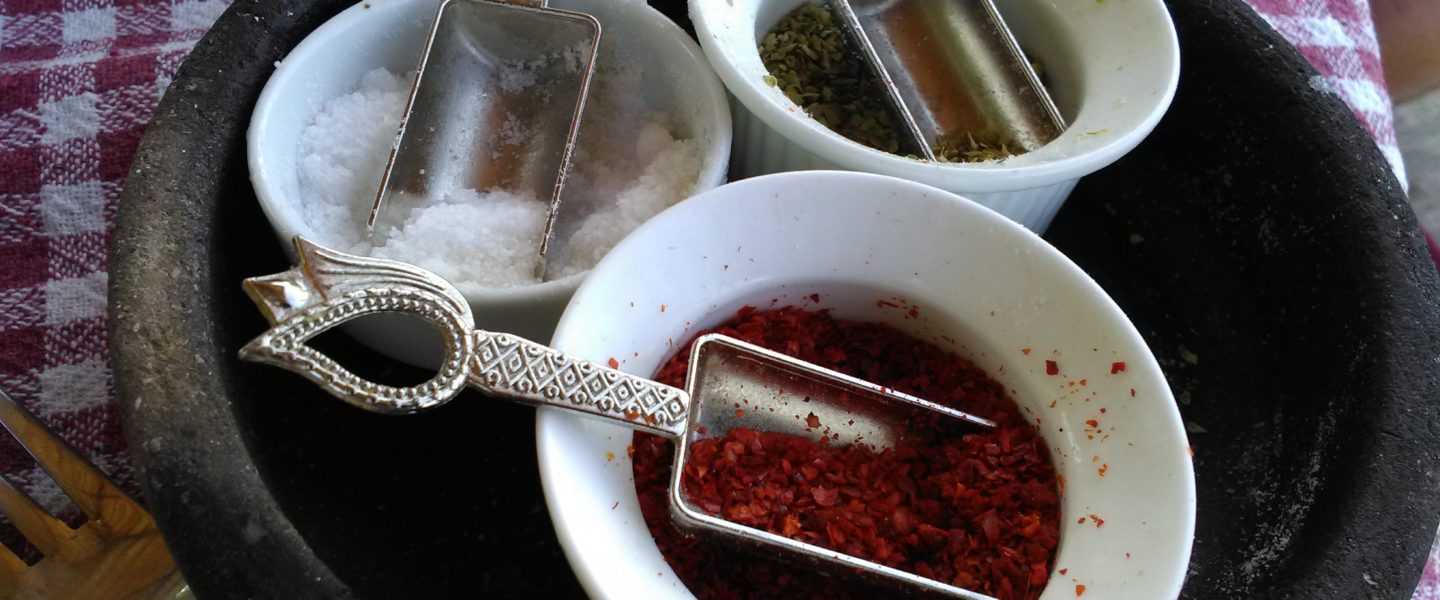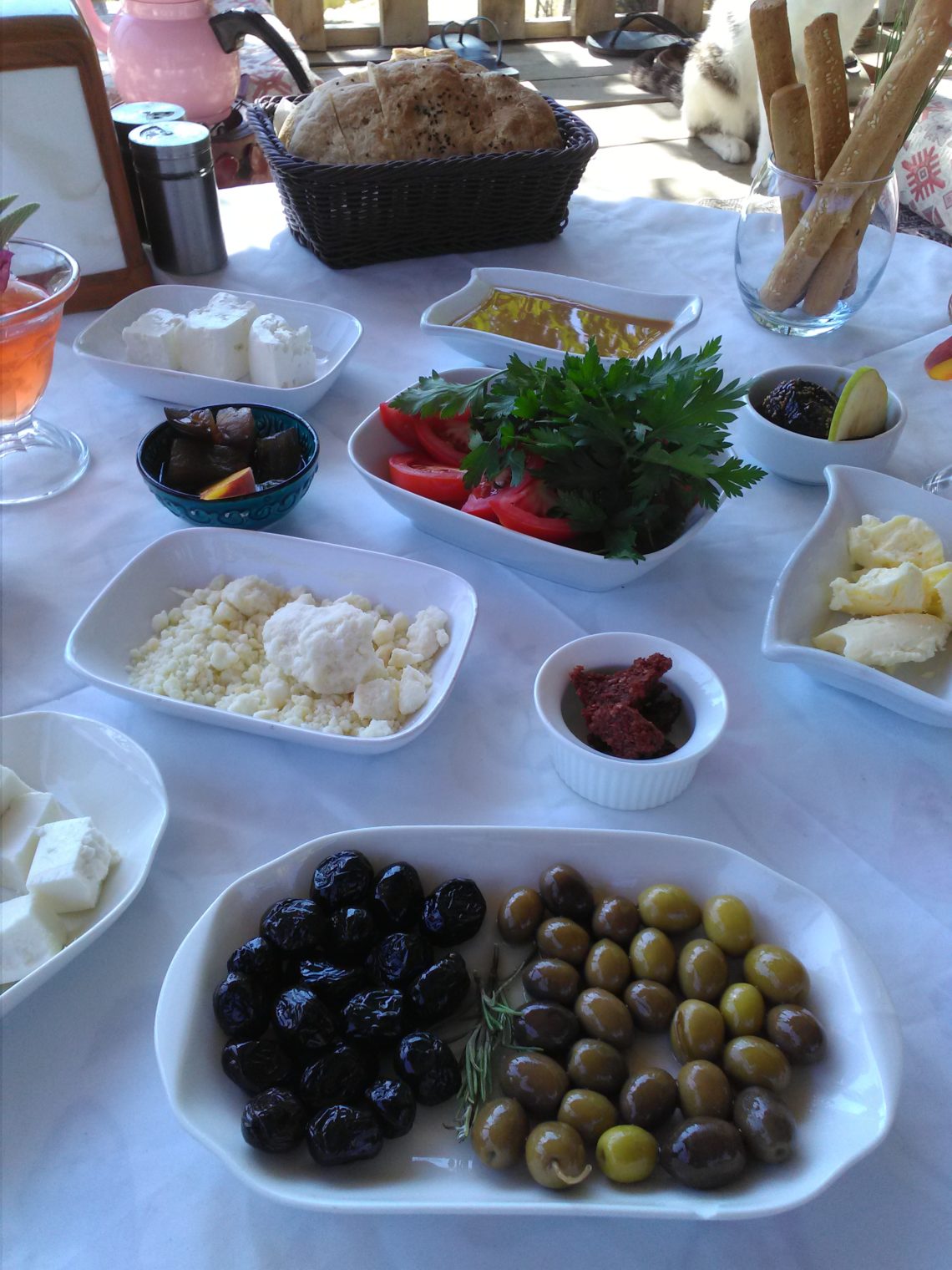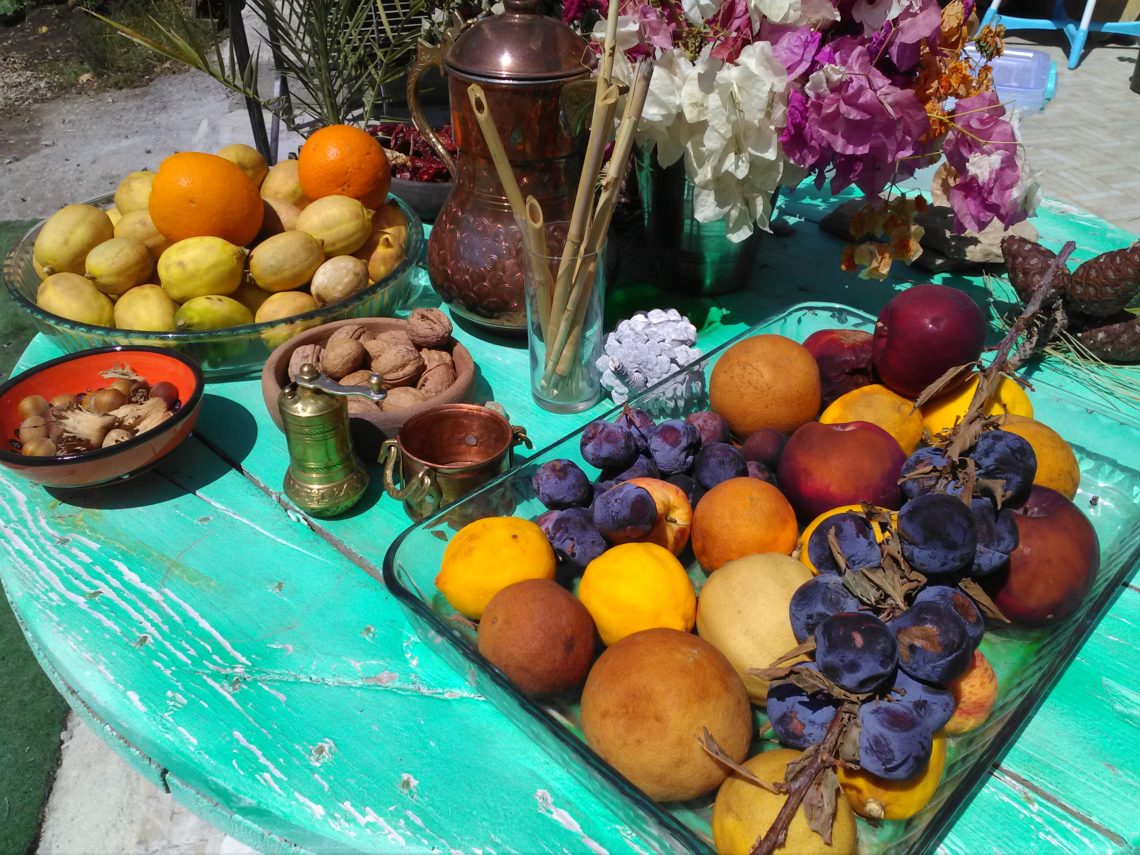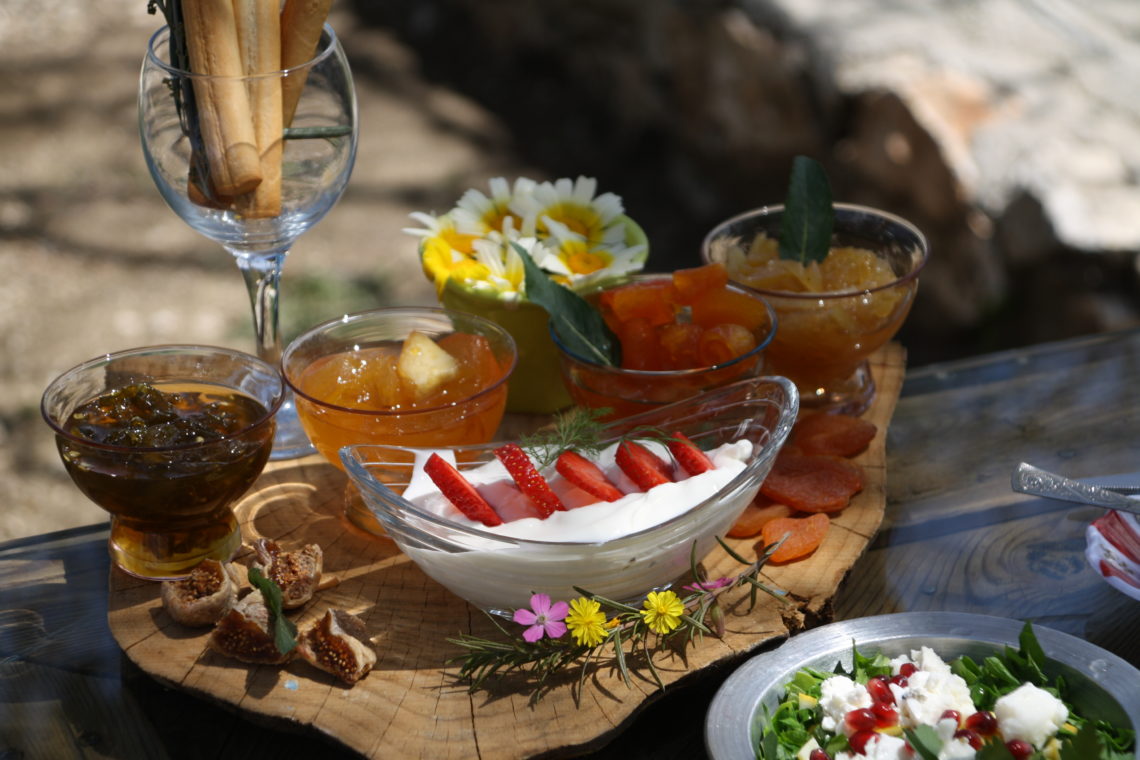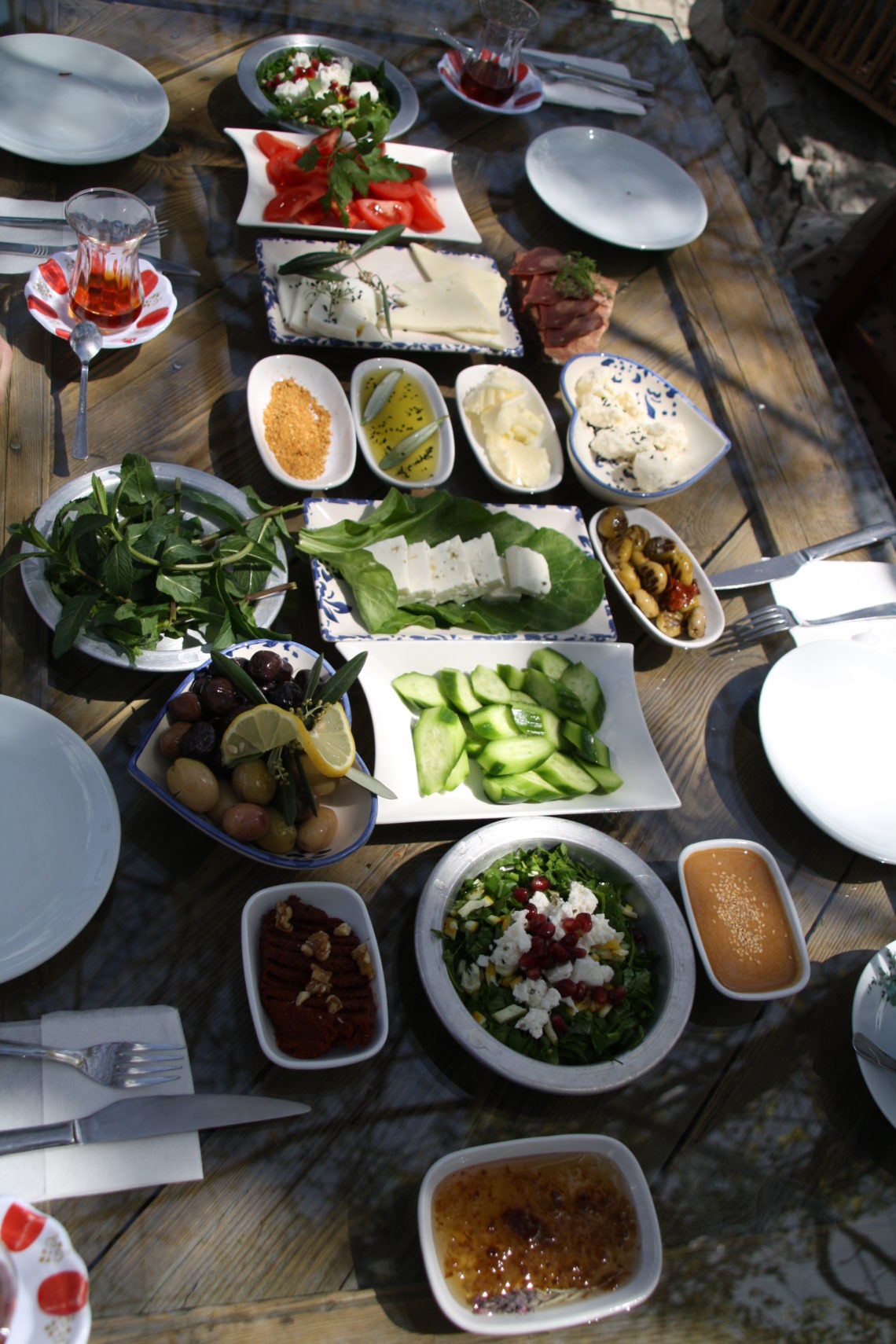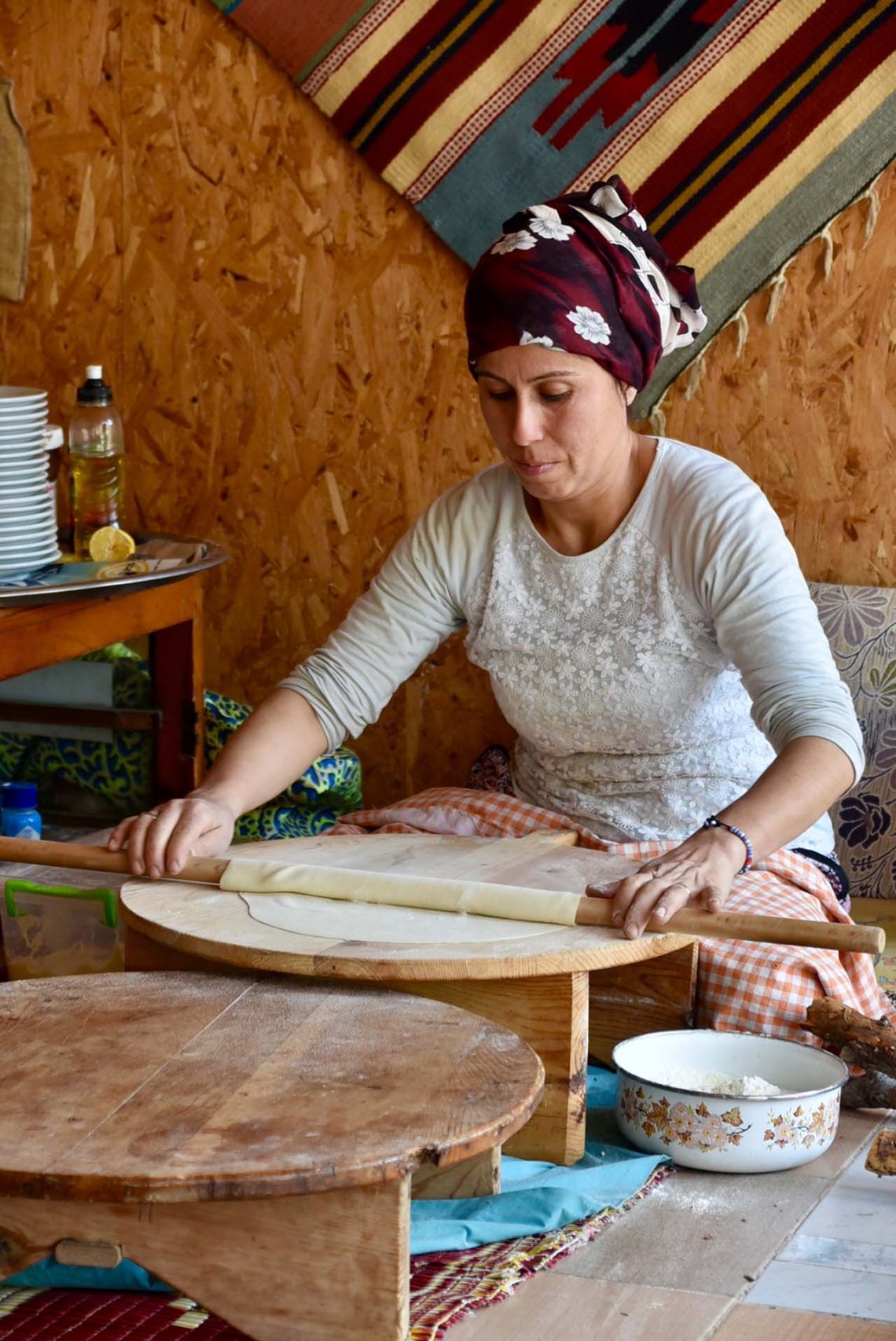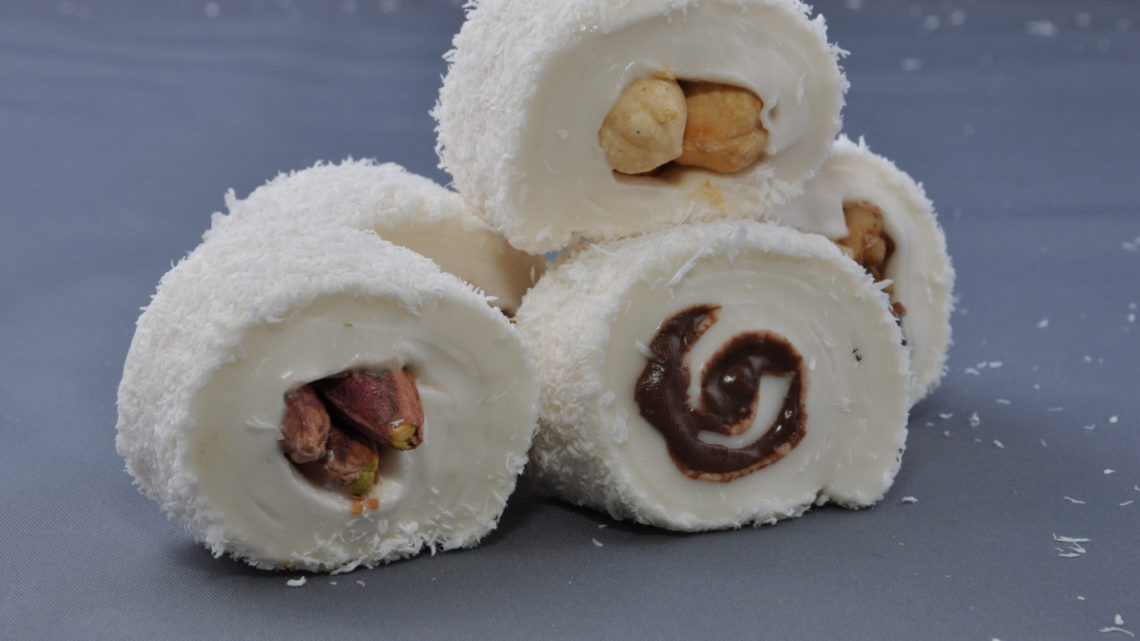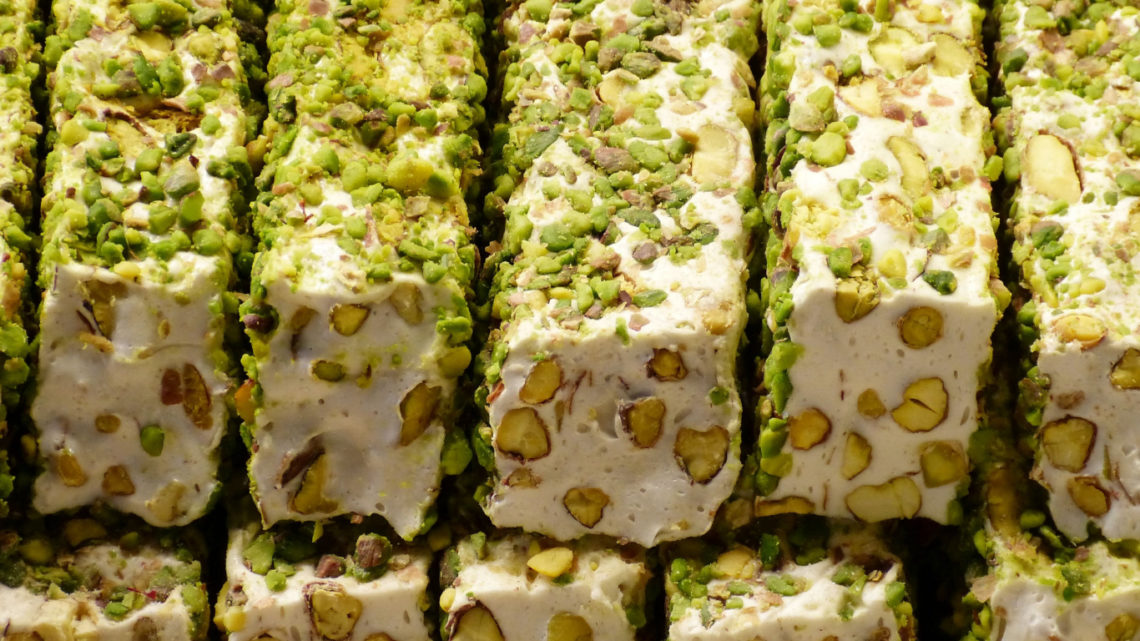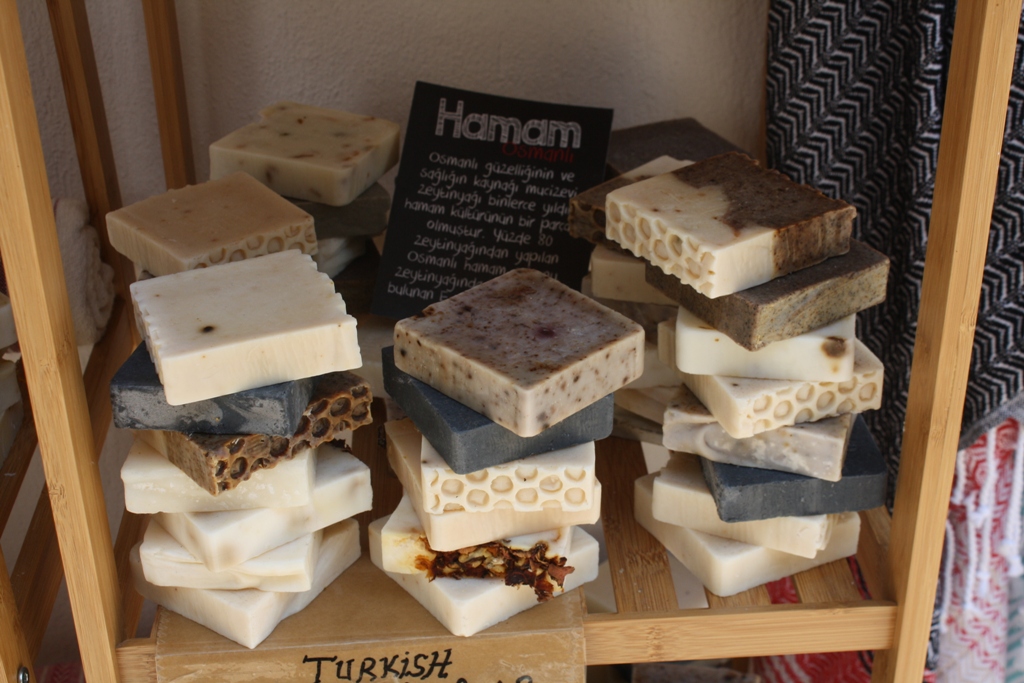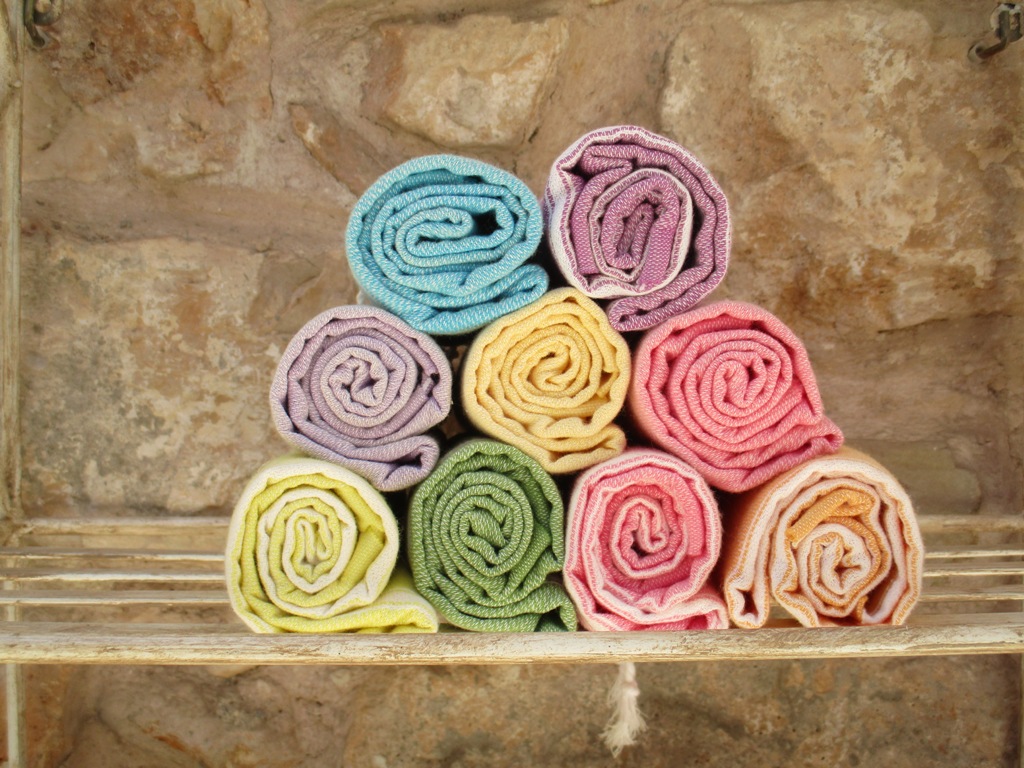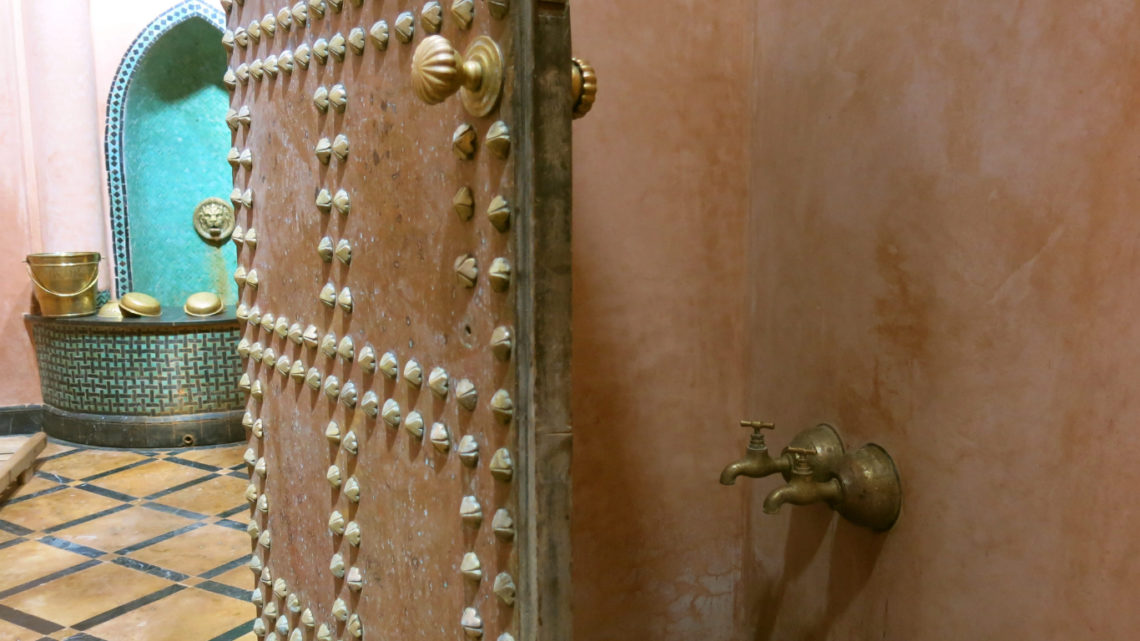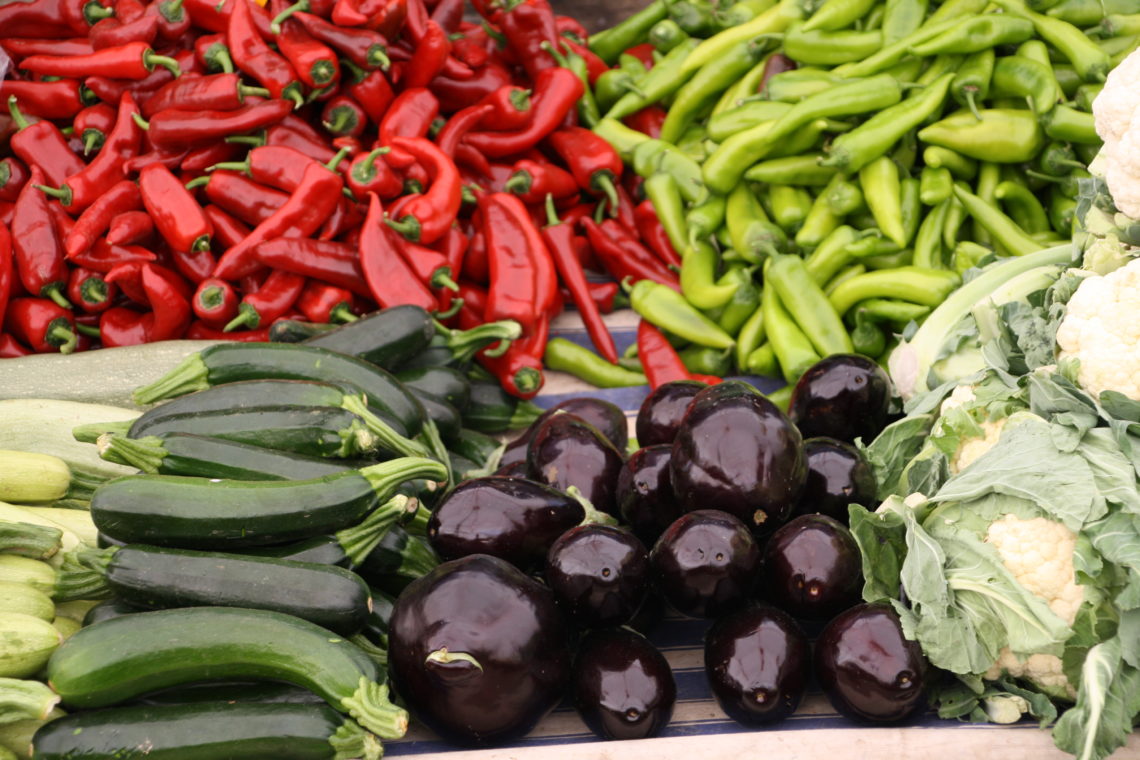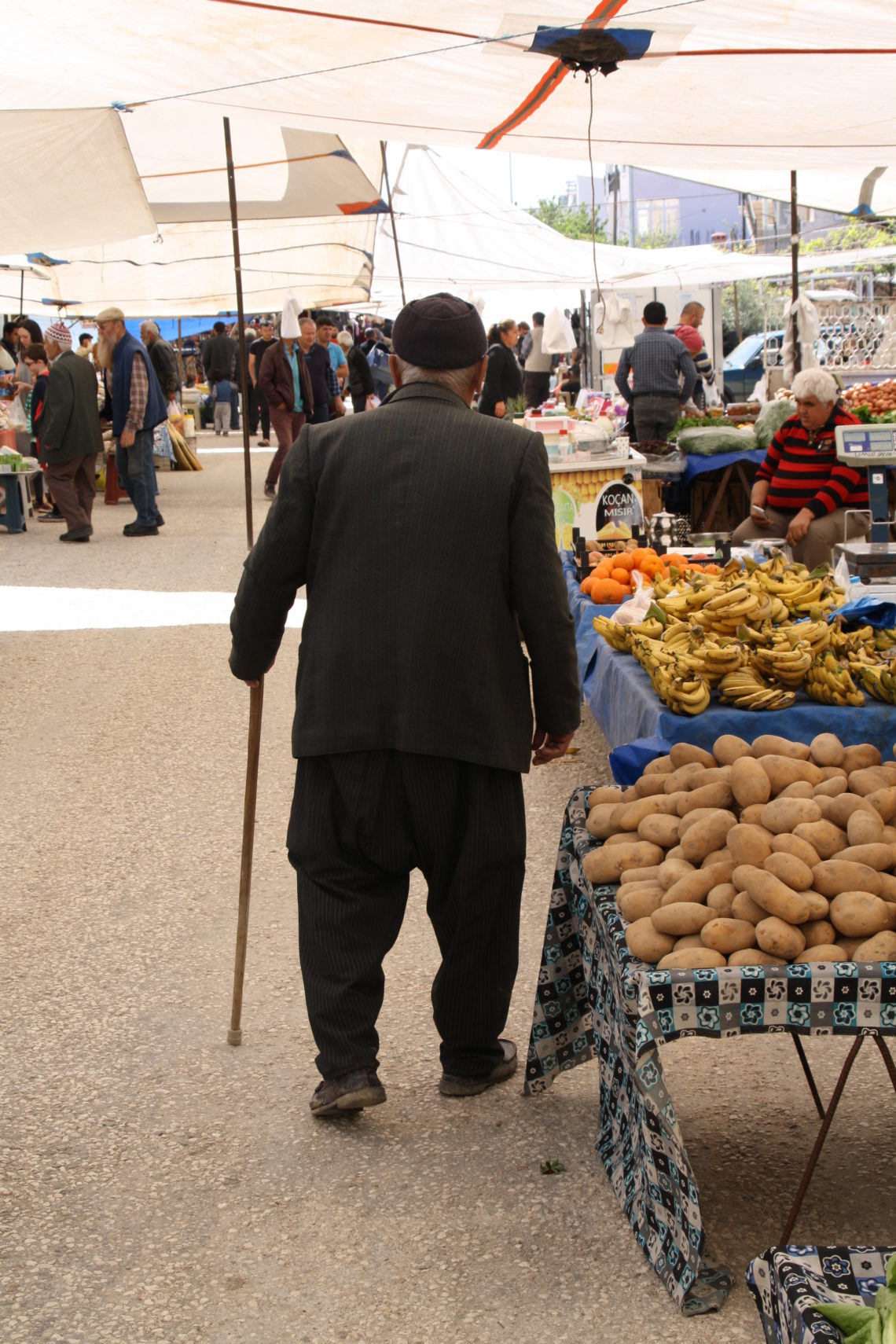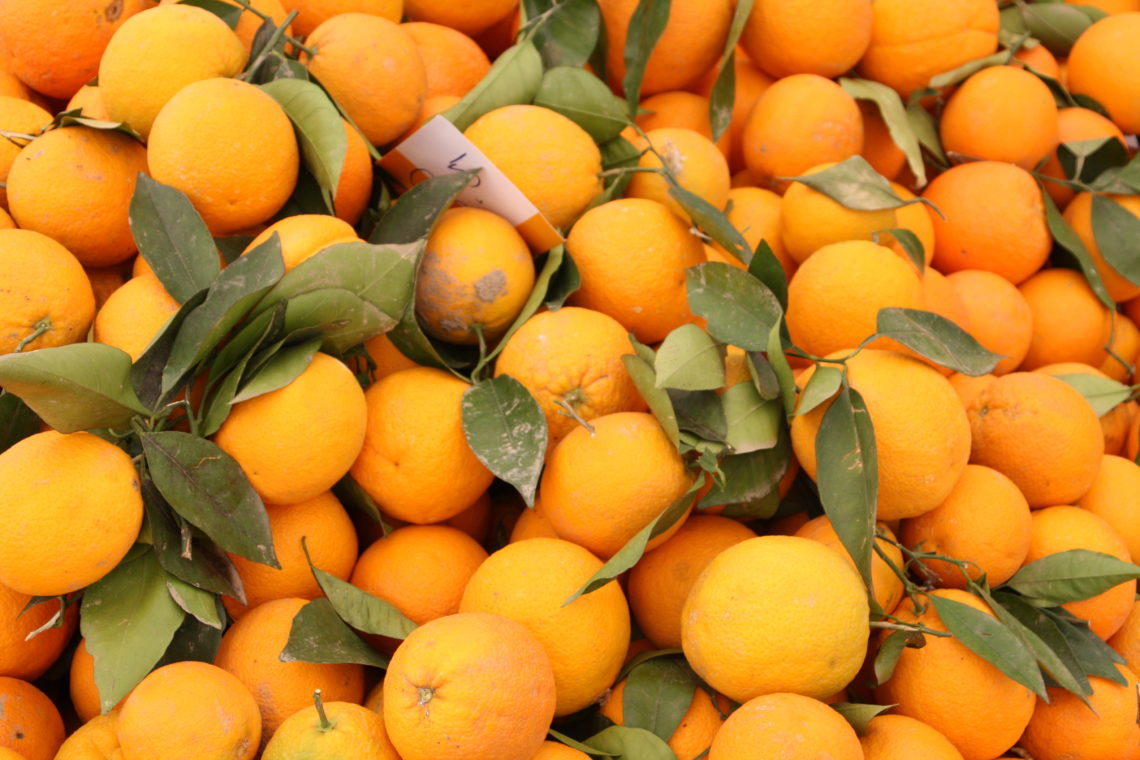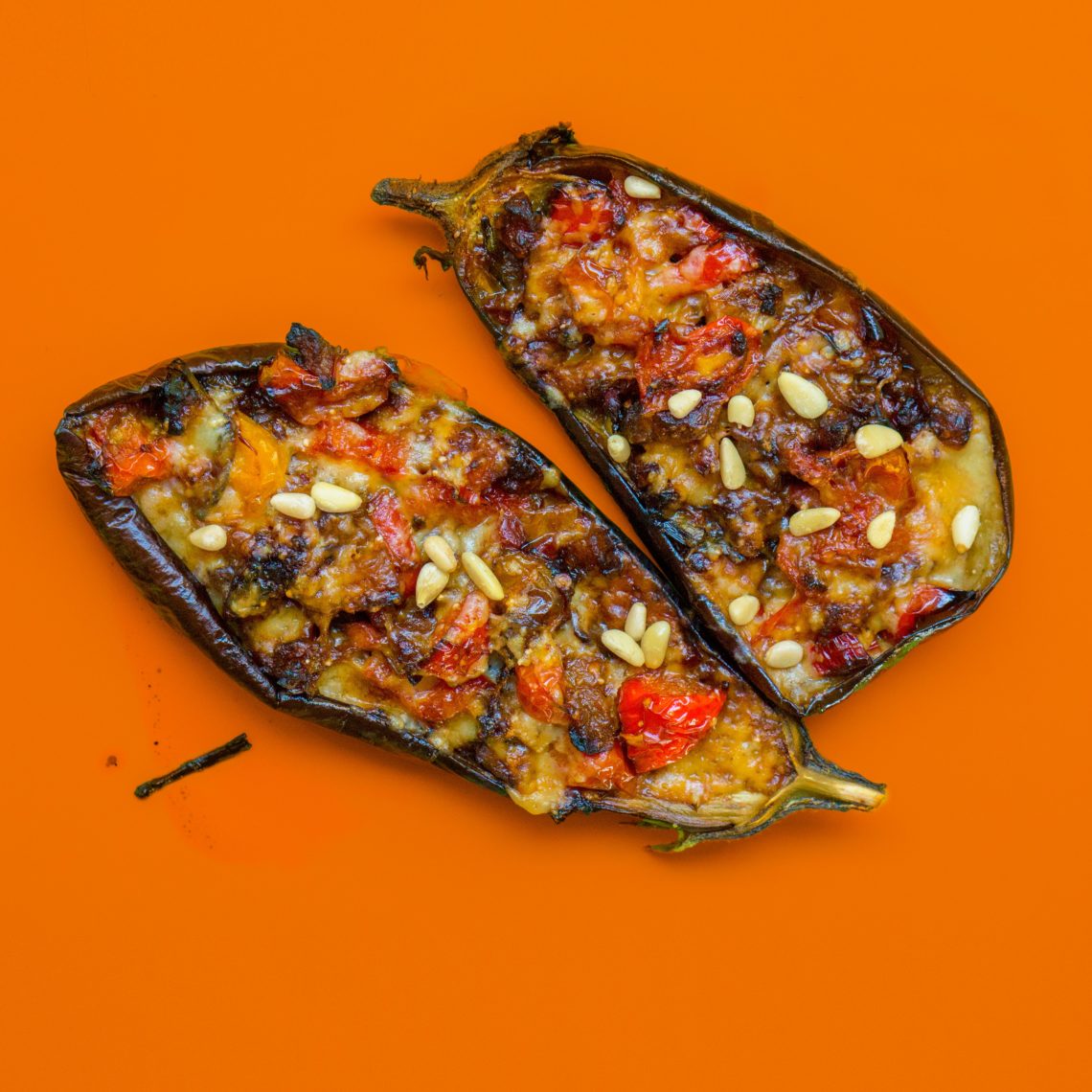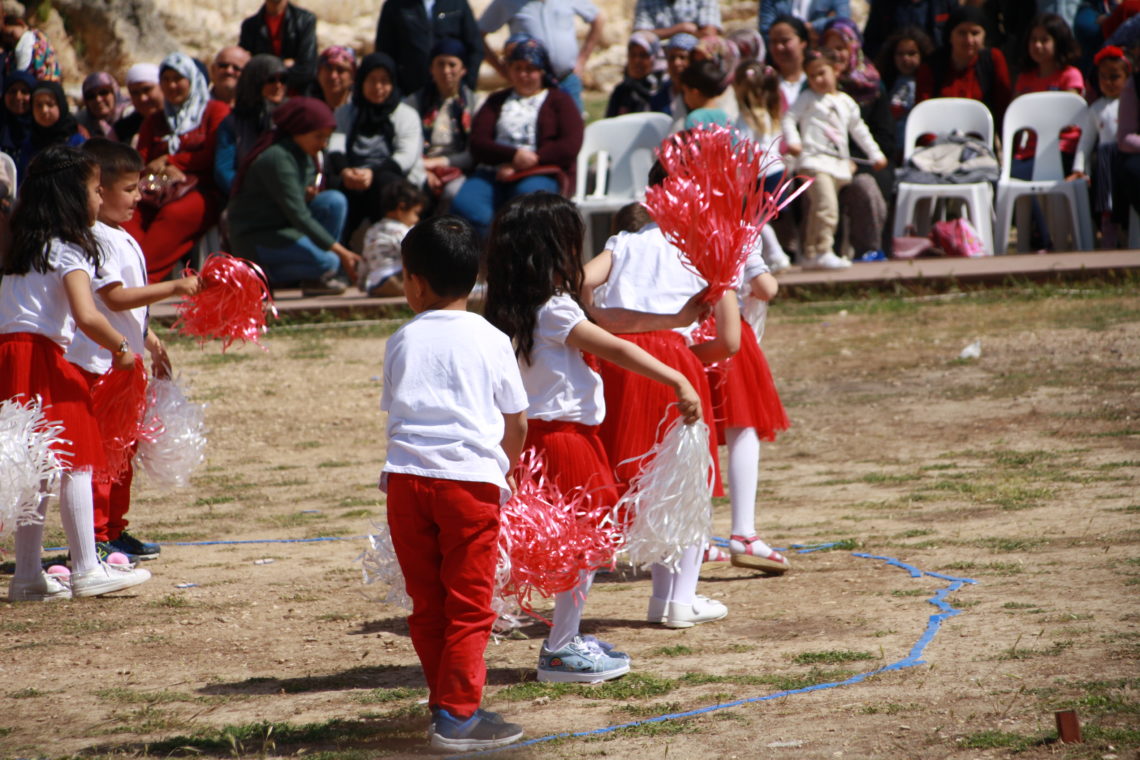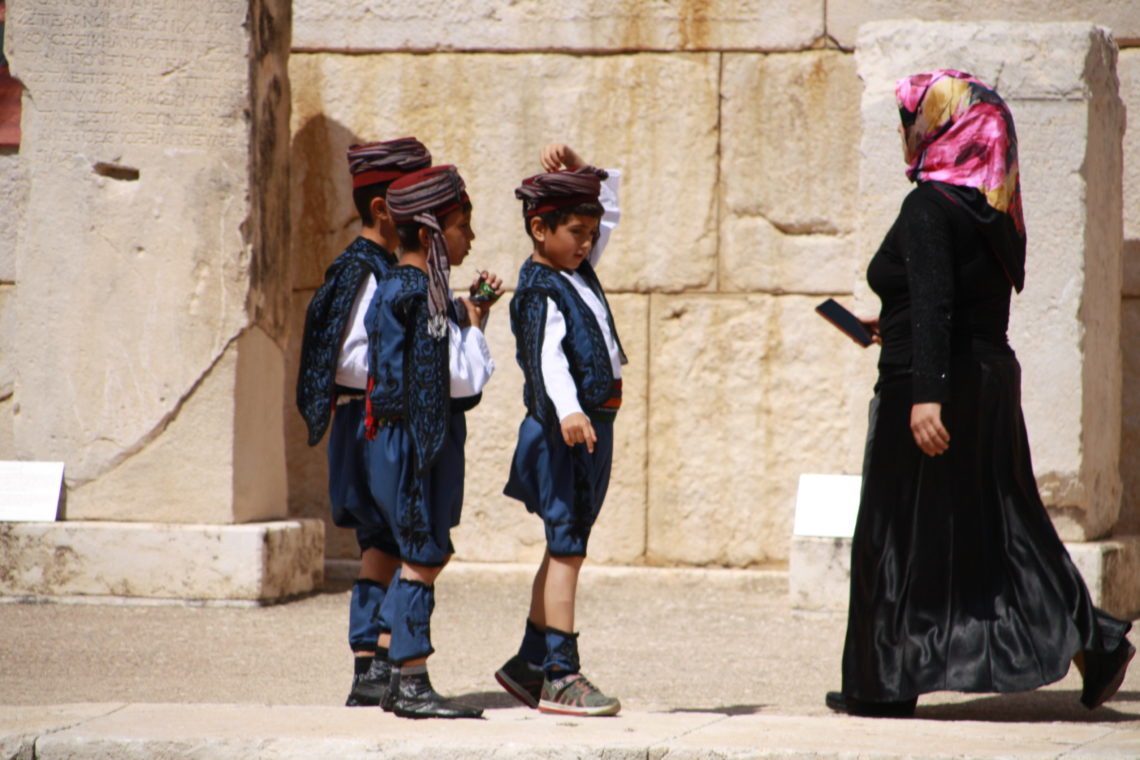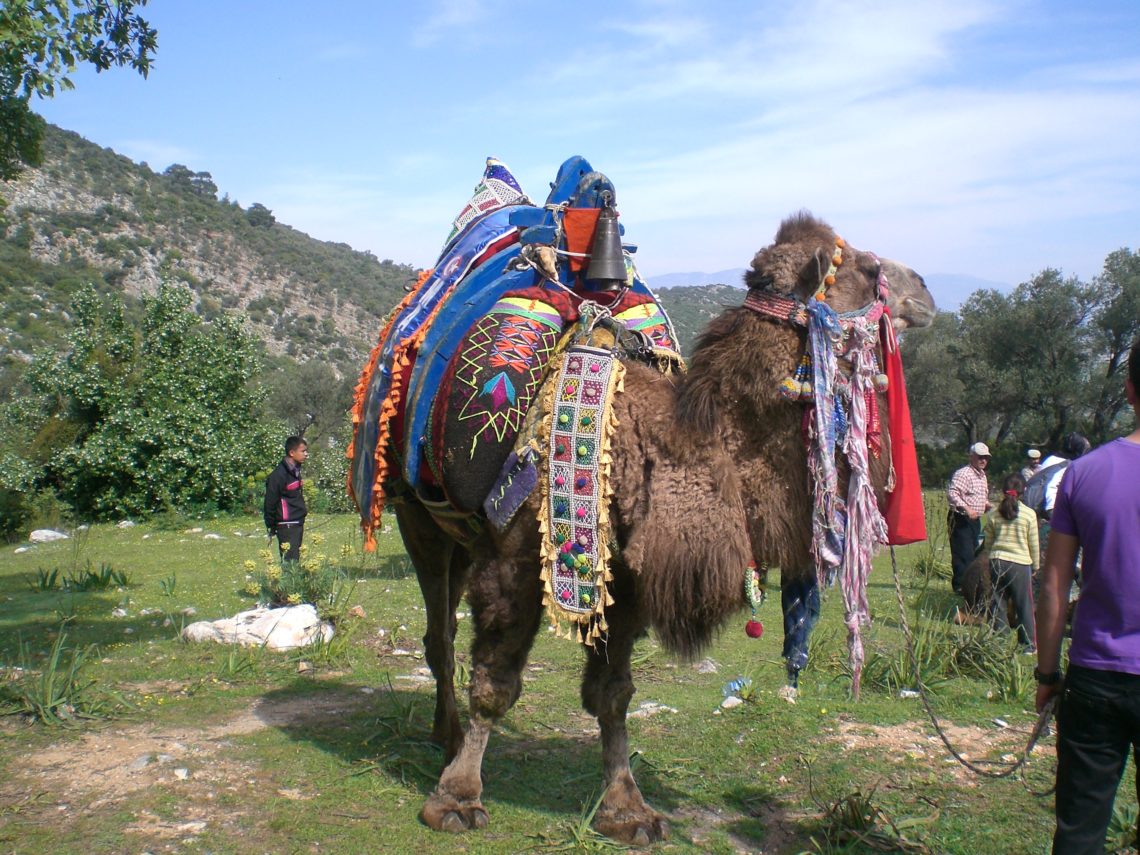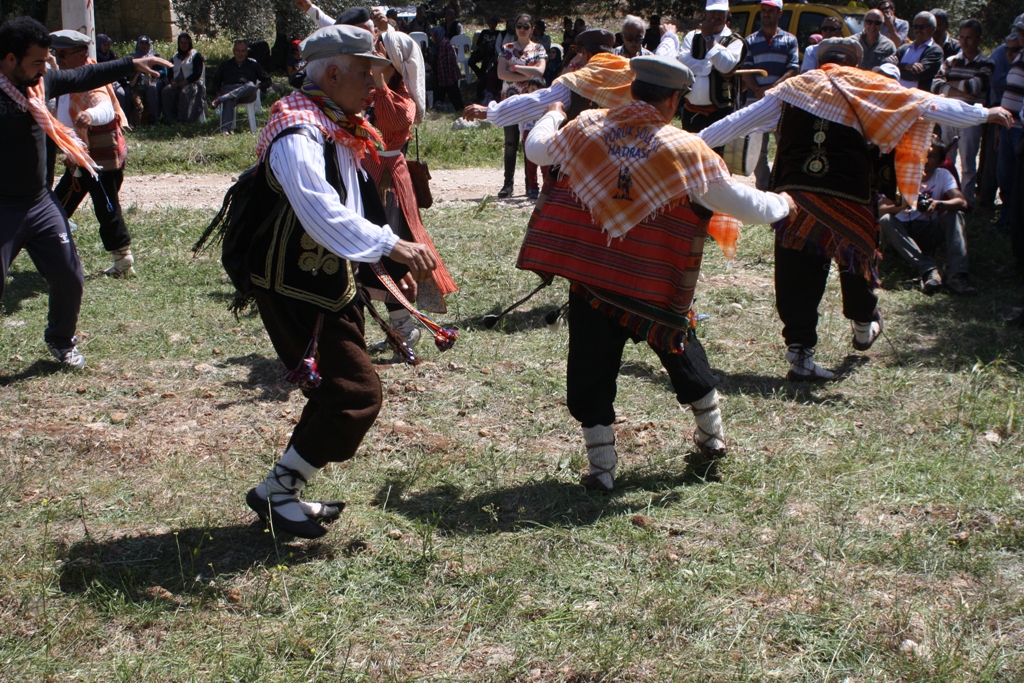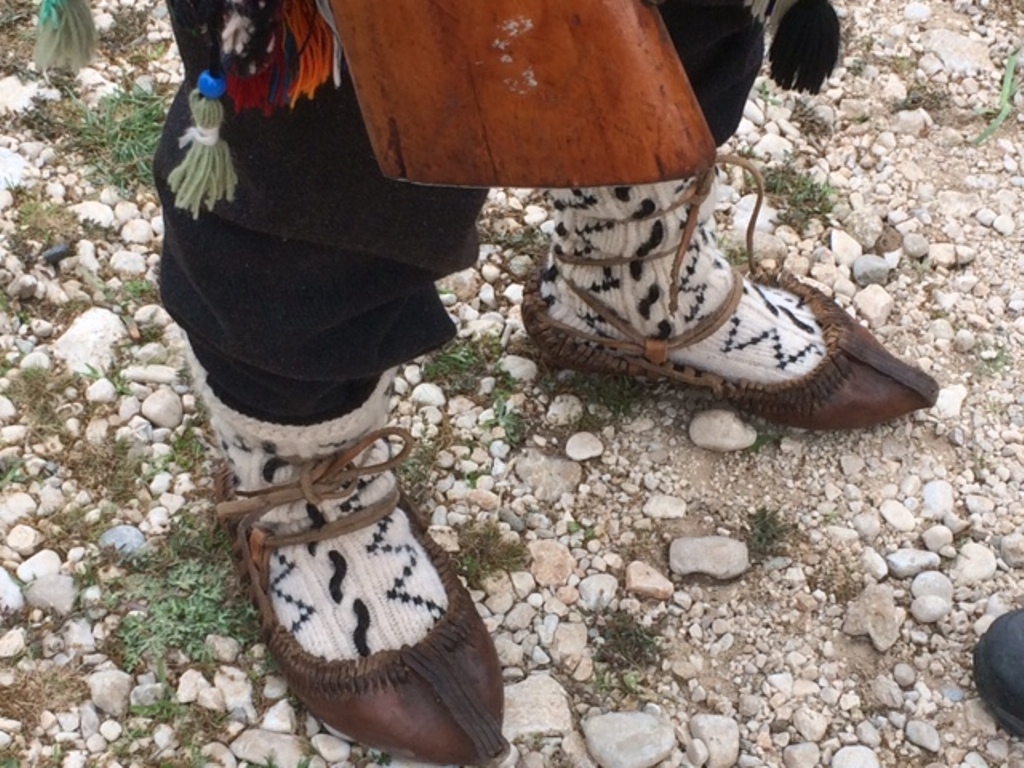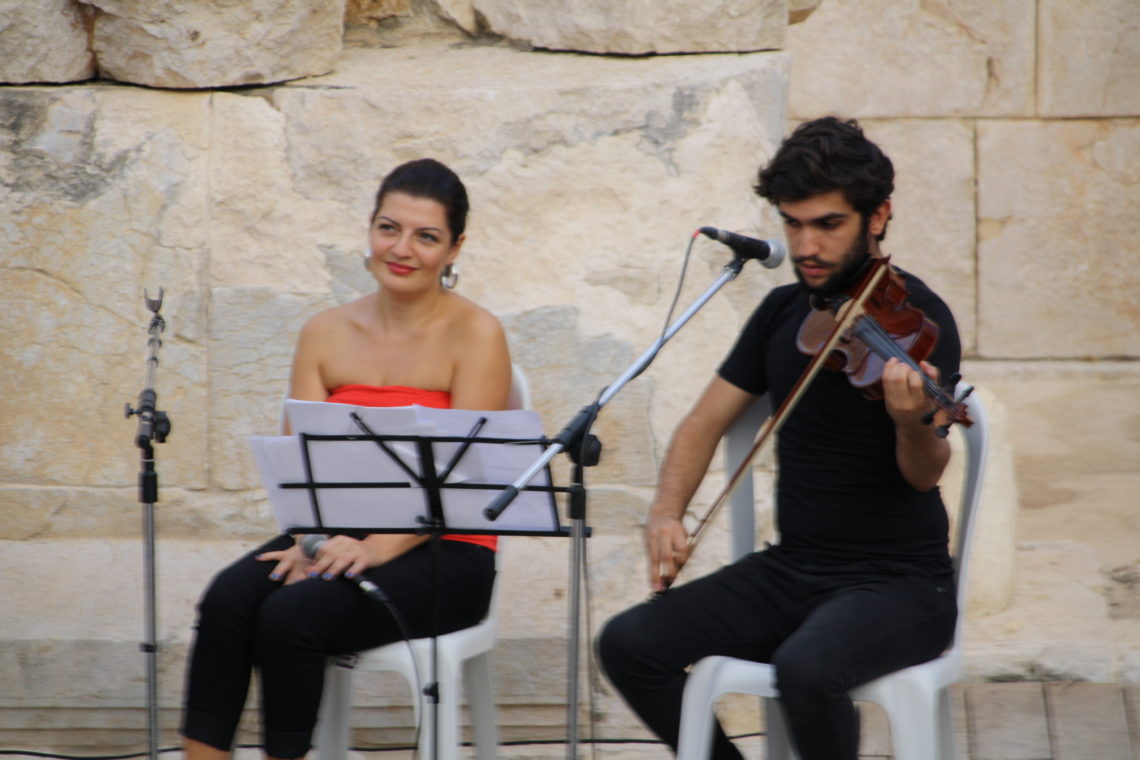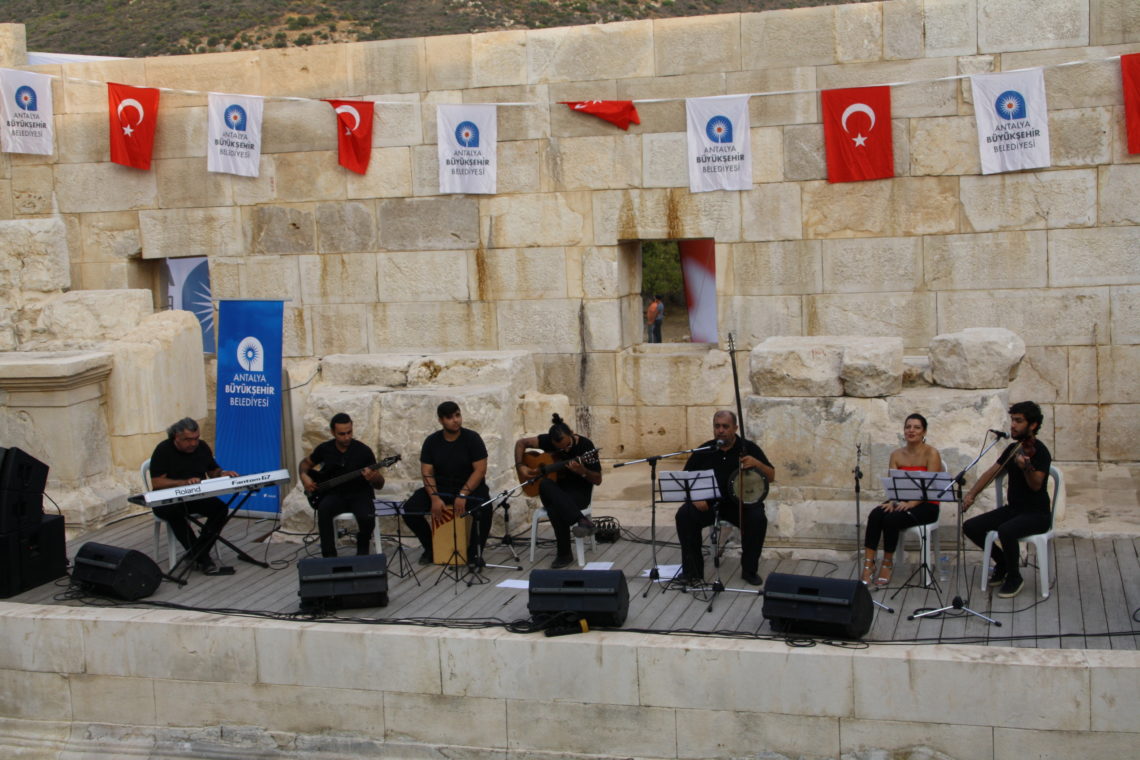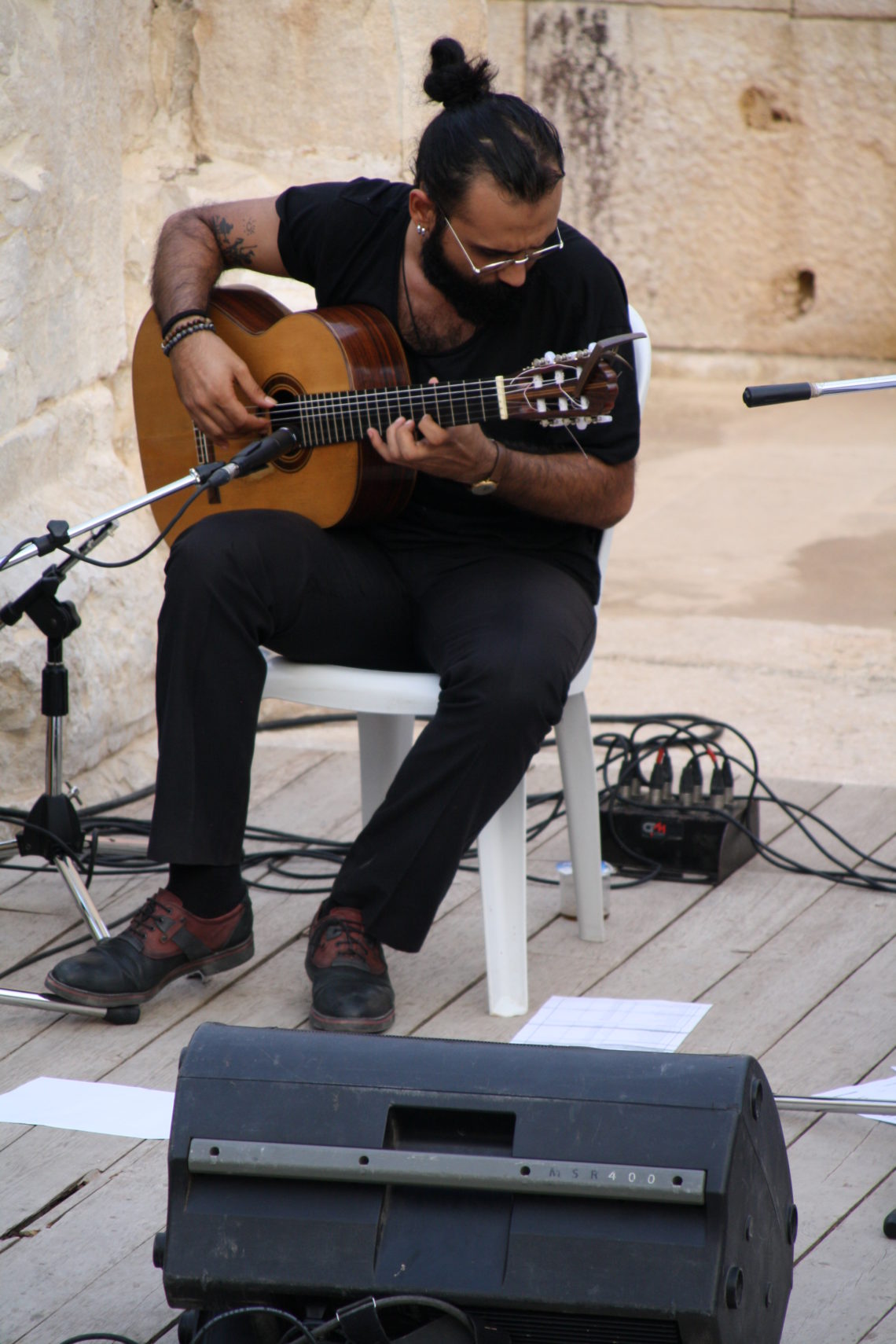Turkish coffee:
‘Bir fıncan kahvenin kırk yıllık hatırı vardir‘
‘‘One cup of coffee-assures-and is worth 40 years of friendship!
Coffee is a treat in Turkey and is often served to visitors to the home. There is a special way to make and serve Turkish coffee. It is made in a small pot with a handle, known as a ‘cezve‘. These come in different sizes and the size of cezve used corresponds to the number of coffees to be made.
When being offereed a Turkish coffee you will be asked if you want it ‘sade‘ (no sugar), ‘az şekerli‘ (small amount of sugar), ‘orta‘ (medium’ or ‘çok şekerli (very sweet).
One cup of cold water per person is put into the cezve. Then a teaspoon of coffee per cup is added, together with the amount of sugar required.( The sugar is added at the beginning of the process, not added at the end.) The coffee is stirred then slowly brought to the boil over the gas flame on the hob. When it boils, each cup is half filled with the coffee. The remaining coffee is boiled again until a froth forms on the top, this is then used to top up each coffee cup.
It will be served to you together with a small sweet (traditionally Turkish delight) and a glass of water. Turkish cups are the size of an espresso cup and come in all sorts of beautiful designs and patterns.
It is always served and drunk black. A true Turkish experience.
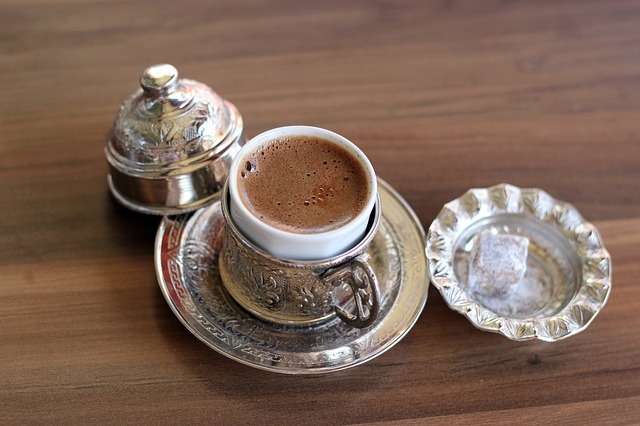
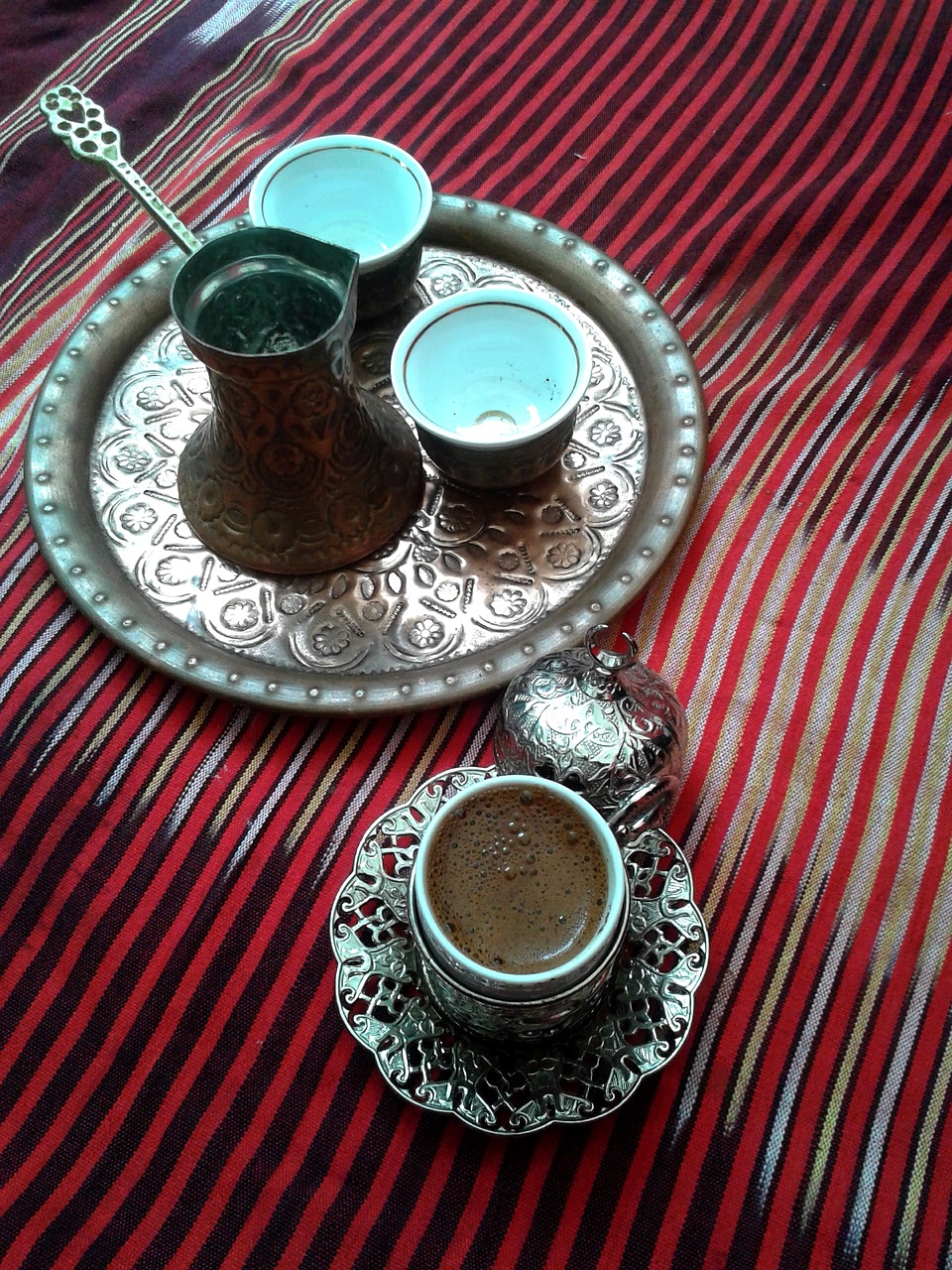
Çay (Turkish tea)
The day starts with tea and ends with tea and is consumed several times in between. It is served in delicate tulip shaped glasses on a small glass saucer.
Just as with coffee, there is a special way to make Turkish tea in a Çay danlik (Turkish tea pot)
Turkish tea is brewed in a ‘demli’ (double boiler). Fill the bottom tea pot with water and put on the stove to boil. Meanwhile in the top tea pot, add tea leaves and a drop of water. Sit the smaller tea pot on top of the larger pot and wait for the water to boil. Once the water has boiled, fill the top tea pot with the hot water. Add more cold water to the bottom pot and put back on the hob to bring to the boil again. Whilst the second pot of water is coming to the boil, the tea in the top tea pot will be brewing.
To serve, pour half a cup of tea into the tea glass and top up with water. For a strong tea, add more tea and less water, for a weaker tea, add less tea and more water. Traditionally Turks will add several teaspoons of sugar to the tea to give it a sweet taste. But nowadays the more health consious drink tea with very little or no sugar.
Most businesses have a cayıcı. Someone who makes and serves the tea. You will even see a tea seller at the local markets providing tea on demand for the stall holders. Visitors will always be offered a cup of tea and much business is carried out over several glasses of çay.
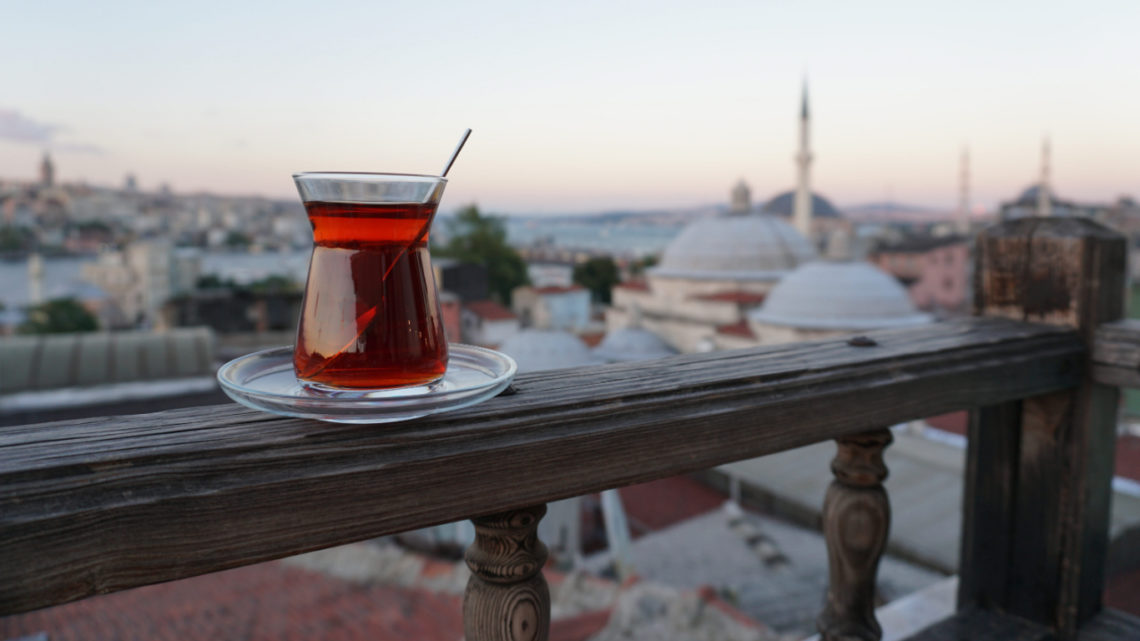
HERBAL TEAS: Herbals teas are also very popular in Turkey, many of them having excellent health and healing qualities. In the Mediterranean region of Turkey, Mountain and Sage teas are very popular as these herbs are found growing in the hills. In Patara you can enjoy a fix of herbal tea at the hotel Patara viewpoint, at Beanies coffee shop or in several of the local restaurants. In Kalkan many of the Patiseries offer herbal tea, served in a pot.
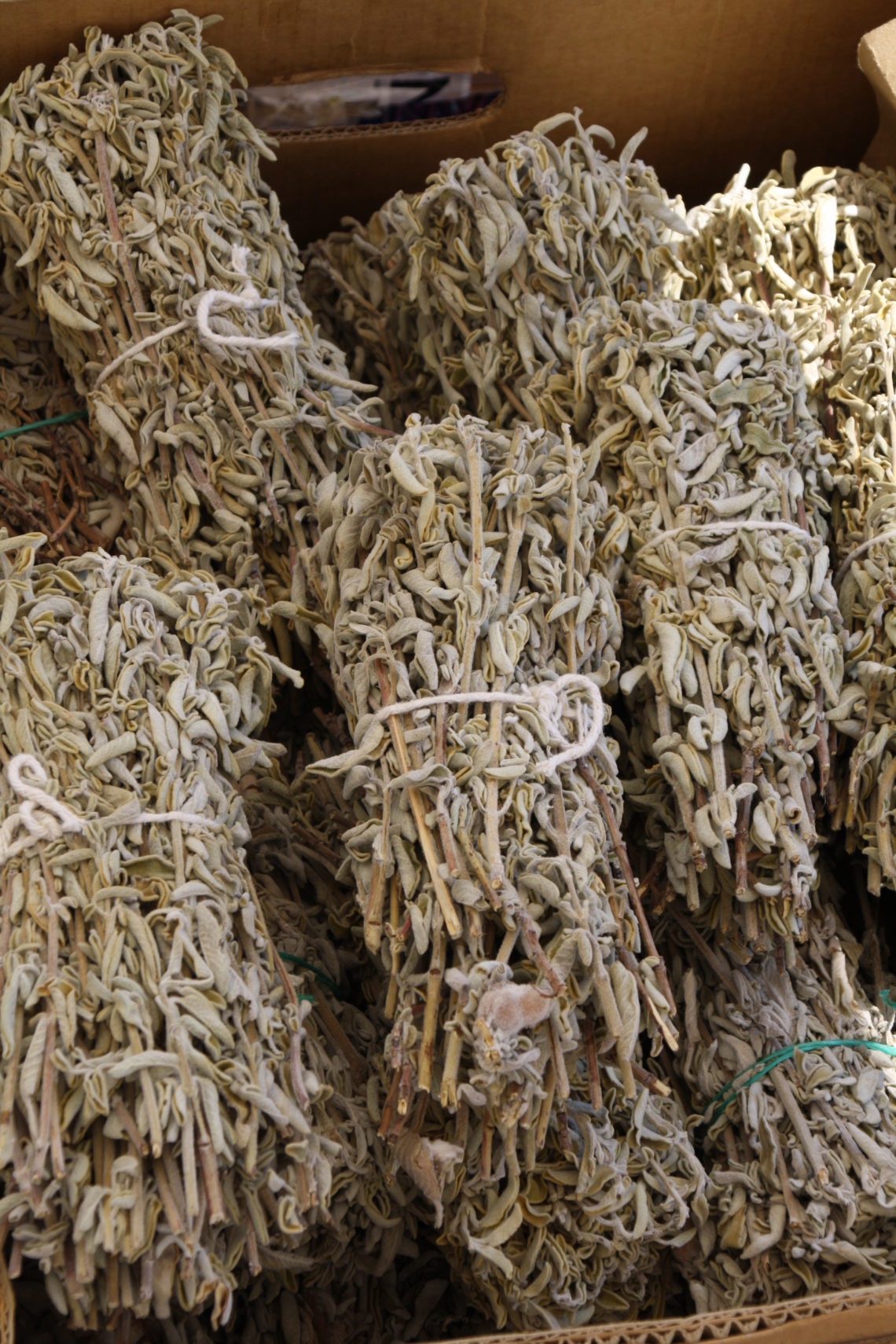
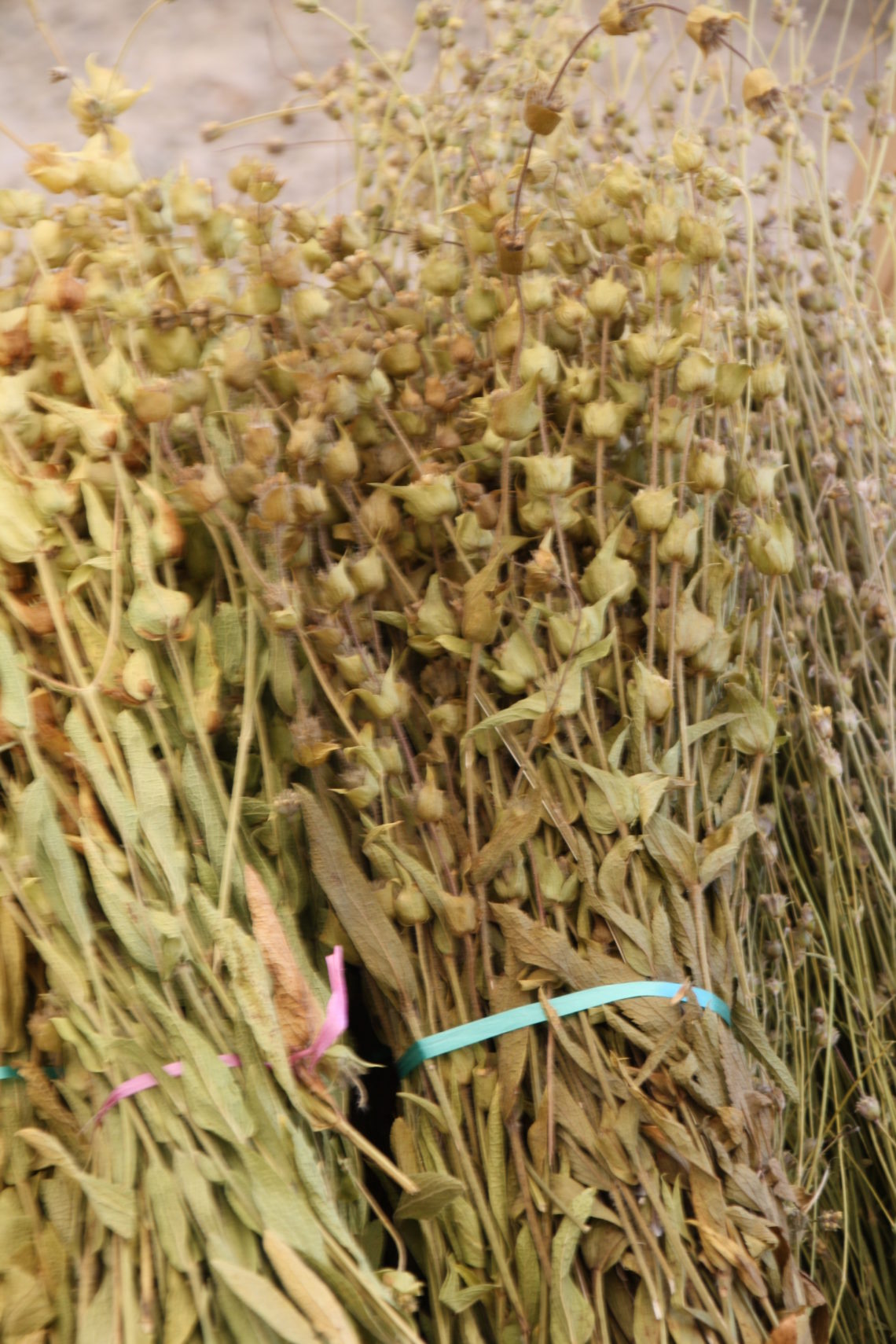
Traditional Turkish breakfast.
Traditional Turkish breakfast is a feast and reflects the diet and foods that are available in the local region where you are taking breakfast. It is a healthy start to the day and as in so many parts of the world, is seen as an important meal, to set you up for the day.
In the Mediterranean region of Turkey, a traditional Turkish breakfast includes tomatoes, cucumber, fresh and dried fruits, a selection of cheeses, locally grown black and green olives, a selection of jams, local eggs (hard boiled, soft boiled, fried together with sucuk (salami) or scrambled together with onion, peppers and tomato and served as menemen). Local yoghurt, breads and sometimes cold meats. All of this washed down with fruit juice and or freshly brewed Çay.
Most of the hotels and Pensions in Patara provide traditional Turkish breakfast ingredients, buffet style, so you can select what you fancy. However it is very tempting just to stick with what we know and many people will end up having cereal, yoghurt and toast, as they are comfortable with this. We would highly recommend that you step out of your comfort zone at least once and select all the ingredients for a traditional Turkish breakfast.
It is also worth seeking out, at least once on your trip to Turkey, a place specialising in Turkish breakfasts. You will be brought a huge selection of dishes to the table to be enjoyed and digested slowly over several cups of tea or coffee. Our favourite place is Bel Muar Çinaraltı Restaurant&Garden, up in the hills above Kalkan http://www.belmuarrestaurant.com.
But you do require a car to get here. Another favourite is the nomadic museum in çiftlik (near Fethiye). But there are many places locally for you to seek out.
Gözleme (Turkish pancakes):
Staying the village of Patara gives you a unique opportunity to eat local foods. The villagers are of Nomadic origin and the menus in the restaurants and lokanatas will include a variety of both meat and vegetarian options. It is certainly worth stopping off for a Gözleme. (Also known as Turkish pancakes). This is a very traditional nomadic bread which is cooked to order and you can watch as the ladies roll and cook the bread on a flat metal plate over the fire infront of you. There are a variety of fillings available, both savoury and sweet. A tasty snack in the middle of the day or after a hard day on the beach!
Lokum (Turkish delight)

Traditional Turkish delight is a far cry from the chocolate covered Turkish delight that can be found in the UK. The recipe for authentic turkish delight (known as LOKUM) was created by Haci Bekir way back in the late 18th century. So popular was his recipe that he was appointed chief confectioner at the Topkapi Palace in Istanbul. The small shop that he opened in Istanbul in 1777 is still doing a roaring trade and is being run by the fifth generation of the family.
Turkish delight is now made all over Turkey and can be purchased in many different flavours. The most delicate is the Rose Turkish delight, with a delicious light sweet taste.
Turkish delight (Lokum) is often served with turkish coffee or as a sweet treat at the end of a meal. It makes a wonderful gift.
Hammam (Turkish bath)
Any trip to Turkey should include at least one visit to a Hammam (Turkish bath). Hamams have played an important part in Turkish life since the Ottoman times. Even though it has its roots in the Roman period, it became legendary with Turks.
Although it has lost the magnificence of the Ottoman times, the hammam still has a special place in Turkish life. At a time when people did not have a bathroom in their home, they would visit a hammam to be cleaned and massaged and would leave feeling relaxed and revivied. It was also a great place for social gatherings to discuss politics or local gossip!
A typical Turkish hammam is covered with a dome that has little windows with glass. Some of the windows are open so that water vapour can escape. It also allows sunlight to enter the hammam throwing shafts of light against the marble walls.
The second charecteristic of a hammam is the ‘belly stone’ (marble slab). It is heated and is placed in the centre of the room. This is where customers are washed and massaged.
Traditional hammams are separated into two parts, one is for women and the other for men. At some hammams there will be specific times allocated for use by men and specific times for the women. Also times when men and women can enjoy the hamam together.
The hammam was a great pace for social gatherings. politics would be discussed, people would chat and women would use the time spent at the hammam to seek out a suitable bride for their sons!
Nowadays a hammam is a place to go for relaxation and to be given a good cleanse.There is an authentic ottoman hammam in the old town of Fethiye and another in the ottoman town of Elmalı. These are perfect for anyone who wants to experience the amazing buildings in which they are housed. Places where people have gone for hundreds of years.
However there are also excellent modern hammams to be found in Patara, Kalkan and Kaş. The hamam in Patara comes highly recommended by many of our guests who have visited. The Hammams in Kalkan and kaş are mainly to be found in hotels. However there is a public hammam in Kalkan, behind the Anka supermarket and also one in Kaş.
Local market
Local market stalls vary from a vendor on a street corner selling produce he has grown in his garden or small holding to huge vibrant street markets, both out door and indoor. Bigger towns will have a daily indoor market, but smaller towns and villages have a weekly market.
The Grand bazaar in Istanbul is well worth a visit to experience a market on a huge scale.
In this area along the Lycian coast we would recommend Akbel, Kınık and Gömbe as being the best markets to visit for the true authentic Turkish atmosphere. At these markets you will not find designer handbags, shoes or clothing but a huge selection of locally grown fruits and vegetables, olives, cheeses, dried fruits, nuts, herbs and spices, along with textiles, tools, and even animals and chickens!
For those people who prefer to combine souvenir shopping with a bit of traditional Turkey then the markets in Kalkan, Fethiye and Kaş offer you the opportunity to see both.
Turkish meze
Meze is an event, rather than a type of dish. One associates Meze with sitting together with family and or friends, grazing on several dishes of food which you share together whilst drinking and chatting.
Meze, just as with Spanish tapas is a huge selection of small dishes, rather than a main dish. These include şakşuksa (Aubergine, mild green peppers and onion cooked in a tomato and garlic sauce, Kizartma (Aubergine, potato, mild green peppers served with a yoghurt and garlic dressing, Imam bayıldı (The priest fainted! -Aubergine filled with a mince meat filling), Kısır (Bulgur salad) fava (mashed broad bean salad), hummus, Havuç salatası (carrot salad), Taze fasulye (green beans cooked in oil and tomato),Ispanak (Spinach dish), cacik (cucmber in yoghurt) or Haydari (yoghurt with mint). The list is endless and every restaurant will have its own specialities.
Visit a local mosque
It is well worth taking the time to visit a mosque. They vary from simple to very elaborate and some have a fascinating history. Even if you are not religious, visiting a mosque gives you a further insight into local culture and beliefs.
The mosque in Elmalı, which we visit on the ‘Mountain trip’ that we offer from the Hotel Patara Viewpoint , is a very old mosque. Known as Ömer Paşa Cami. It was built to the same design as the Sultun Ahmet Mosque in Istanbul, but on a different scale. It is five times smaller. It is a fascinating place to see.
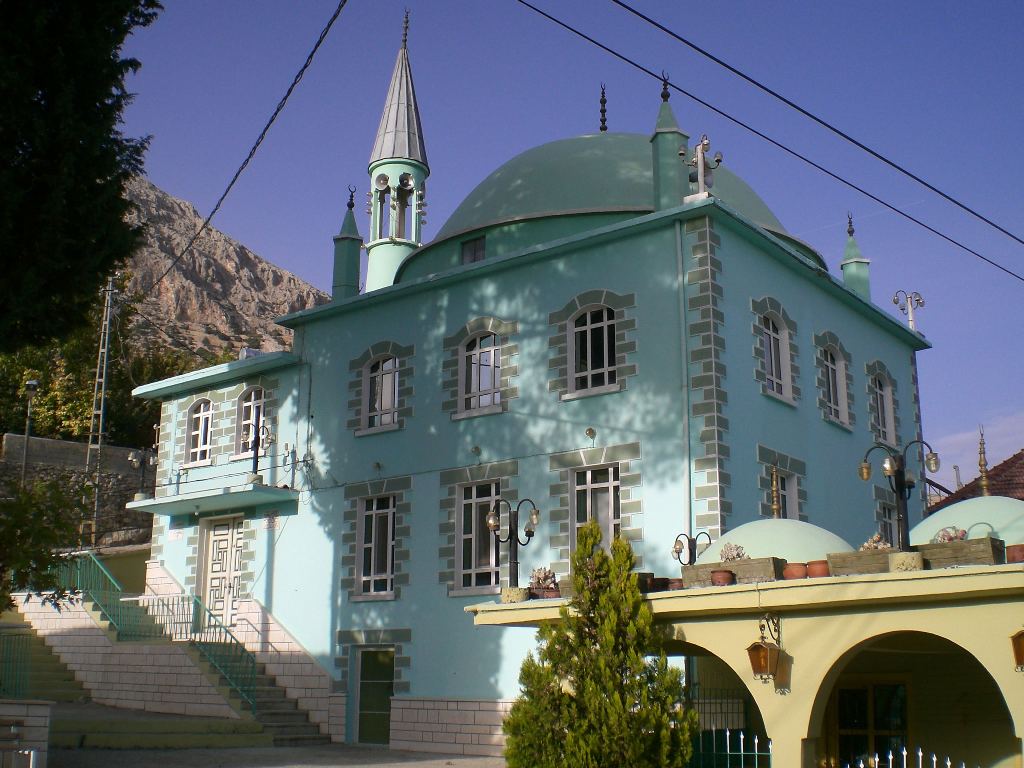
In Kalkan and Kaş a couple of the mosques were once churches, as the villages were inhabited by Greeks until the exchange of population in the 1920s. So these two have their own unique history.
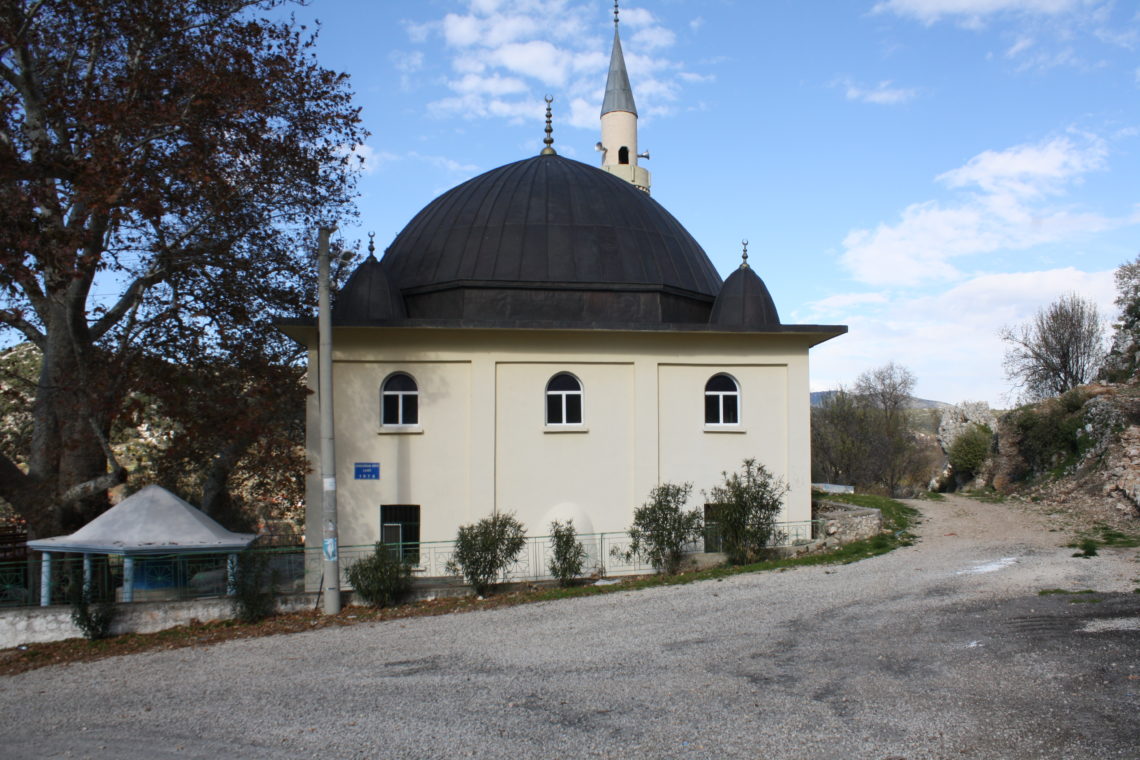
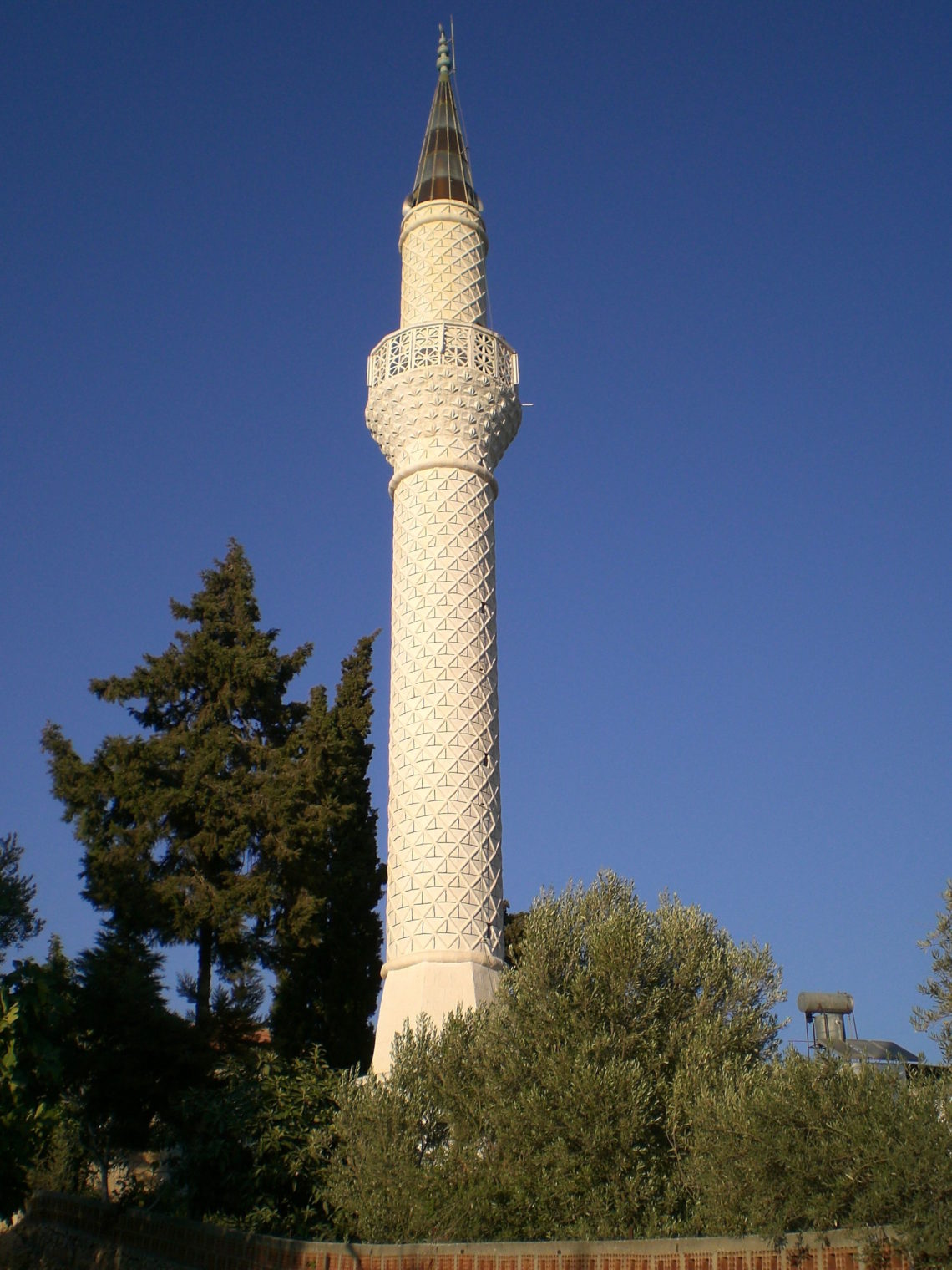
In Patara the mosque has been rebuilt in the past few years. The original mosque was very tiny and getting into dis repair. The villagers decided to build a slightly bigger mosque and used the skills of local craftsmen to do this. The windows are wooden and small, therefore allowing light in, but keep the building cool in the summer months. The door has been beautifully carved by a local carpenter. Many local people from the village gave a contribution in some way, whether financial to help fund the build or by providing tiles, carpets, curtains etc..
When visiting a mosque it is respectful to dress appropriately. Ladies should wear long sleeves and a skirt or long trousers and cover their head with a scarf. Men should wear long trousers and a shirt.
Join in with local customs, festivals and weddings.
It is always worth seeking out a local festival or wedding to get a taste of ‘traditional Turkey’. All of these occassions are filled with traditions and customs related to the local area and everyone (including visitors) are encouraged to join in. Festivals that could be taking place whilst you are visiting this area of Turkey would include: Engagement party, wedding party (in the evening), wedding meal (lunchtime, where all of the village will be invited) followed by a big party in the evening with music and dancing ,Nomadic walk, Arts and crafts festivals, musical festivals (sometimes using the ancient amphi theatres of Patara and kaş for the performances), Theatre, Oil wrestling, camel wrestling, şeker Bayram (sugar festival, after Ramadan), Kurban Bayram, special meals and ceremonies to remember someone who has died. A little further afield including Fethiye, Kaya Köy and Finike there is also the Almond Blossom festival, mushroom festival, Orange festival and Tomato festival.
Here at the Patara Viewpoint we try to ensure that all of our guests will know of any local festivals or ceremonies that will be taking place whilst they are here in Patara.
